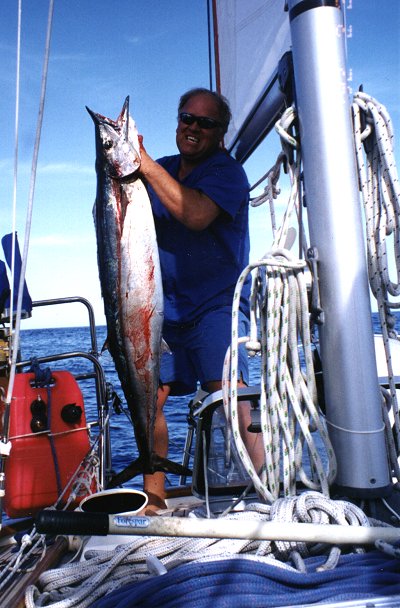Puerto Vallarta, Mexico
We are in Puerto Vallarta at the present time at Paradise Marina. We left Mazatlan on December 4th and headed to Island Isabela, then on to San Blas for three days. We went to town to check in, as you have to check in & out every time you go to a new port in Mexico. San Blas is one of the oldest ports on the west coast and is a Navy town. After we checked in we walked around town to see the old forts & buildings that are still standing there. There were many Navy guys walking around town with machine guns hanging on their shoulders. When we go to town we "dinghy pool" with another boat we sail with, to the beach, then walk a mile or so to catch the bus into town.
The real experience is riding the bus with the locals, trying to talk with them while they are all trying to help you get where you want to go. The Mexican people are very nice and friendly. We had a cruiser with us that had been here the year before and met a local that takes people on a jungle tour. We didn't know they had jungles in Mexico, but they do. We went up this river, just like in the movies with the trees over hanging the river. There were six of us in a little row boat. We saw waterfalls, crocodiles, boas, iguanas, and storks, all in the real jungle.
The next day we came back from town and went to get on our boat. There were bees all over the rear deck, so I pushed off and we went over to our friends boat for a couple hours. We went back to our boat and there weren't too many bees left, so we went aboard and the whole rear deck was covered with dead bees and bee parts. The dinghy that I had left there was completely covered with dead bees and parts too. I got a bucket and used salt water to wash them off and drive away the live ones that were still there. I got down inside after I finished cleaning the decks off and didn't have any bees in the boat luckily. We figure that some African killer bees drove a swarm of honey bees off the beach to our boat and killed them there. - Another fun experience.
Now the fish story. We had just left Turtle Bay on our way to Baja St. Marie and were out about 60 miles, there wasn't any wind so we were motoring. I decided to put out my pole with a black & white hootchy with marlin double hooks. We were going about 4.5 knots when this fish lit up the pole. He took everything off the reel right down to the center spool. I had about 100' left when we shut down the boat and cinched up the drag as I had a 60 pound dracron nylon leader on. All I had was my old salmon reel, it wasn't near big enough, but it got the job done. I pumped him in all the way and he never let up. It took about 30 minutes to get to the boat. At that time, we didn't even realize what we had. He looked too big to get up on the boat. But I got him close and with a little help, pulled him up. Wow what a fish! We measured him up and he was 55" long, 7"thick, 9" deep. The guy that was with us was an engineer, so he did his calculation and figured him at 68 pounds. All I know is he was really heavy to hold up for the picture.
We made it to Baja Santa Maria that day and went around giving big fish steaks away as we didn't have room for all of it. We also caught a mahi-mahi that was about 20 lbs. We have learned not to put our gear out unless we are ready for fish.
The waters down here are full of marine life. When we came into Puerto Vallarta, the bay was full of whales, as this is their winter and breeding grounds. We probably saw at least 100 whales on our way in.
We will be here through January and I am not sure after that time. There has been talk of doing some work in Brazil. In March, we are planning on heading to the South Pacific.
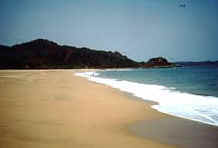 |
San Blas was founded in the second half of the XVII century and at the moment is the main tourist center of the state of Nayarit, due to their magnificent beaches and surroundings full of vegetation. It was starting point in Time of the Colony of countless expeditions, like |
| those of Brother Junipero Serra and Father Francisco Kino and place of arrival of the famous Naos from China. Later it would be stage of inflaming battles for the independence and sovereignty from Mexico. | |
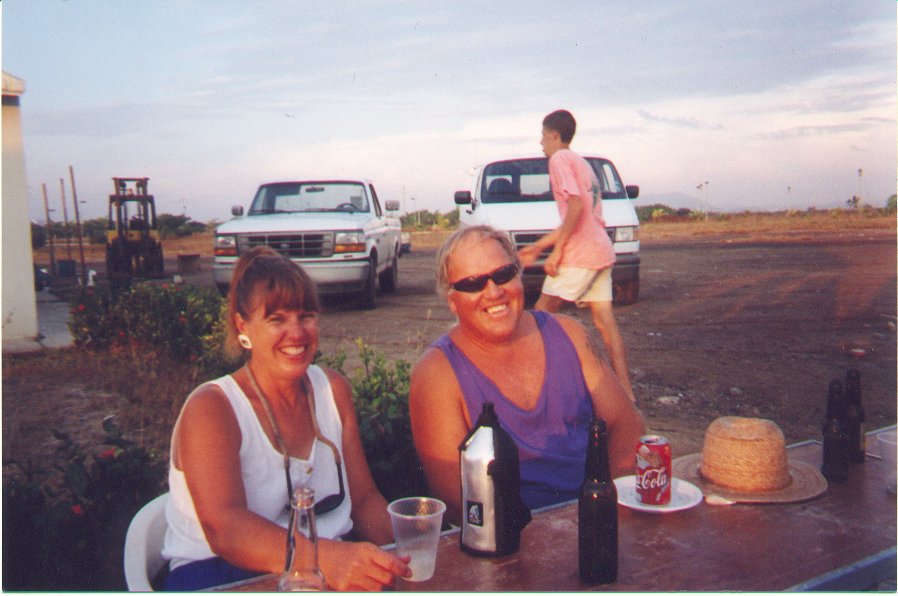
Welcoming party at Mazatlan
Dan Elkins and his Wahoo fish - outside of Turtle Bay, Mexico
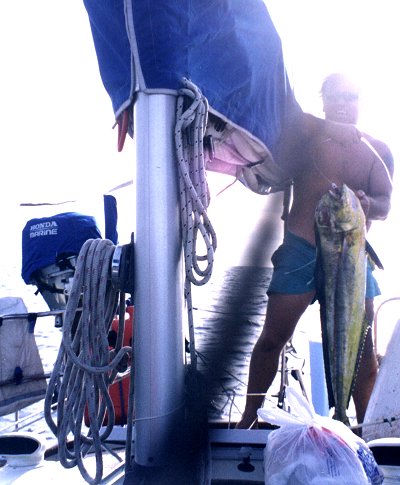
Dan Elkins and his Mahi Mahi - Cabo San Lucas, Mexico
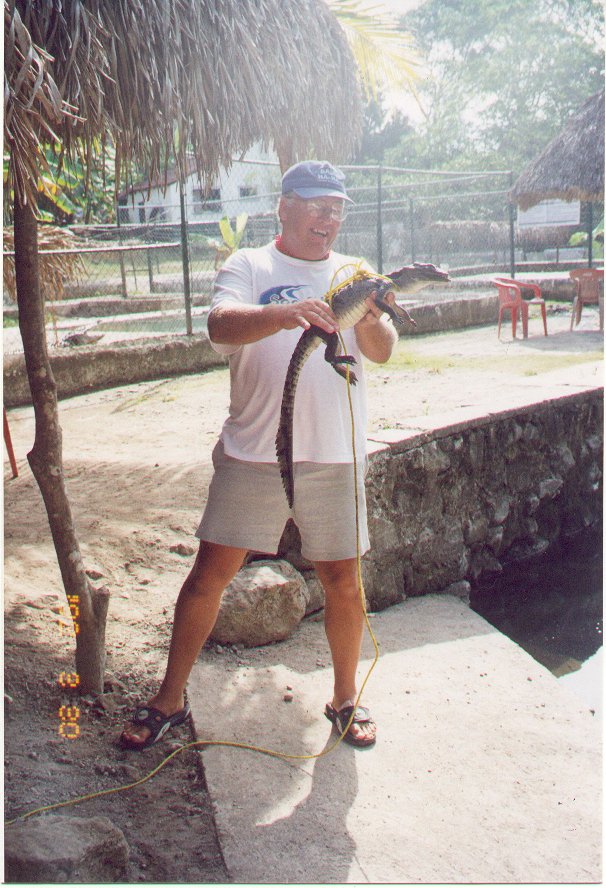
Dan with a Crocodile
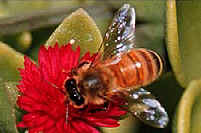 |
Africanized Honey Bees (AHB) -- also called "Africanized bees" or "killer bees" -- are descendants of southern African bees imported in 1956 by Brazilian scientists attempting to breed a honey bee better adapted to the South American tropics. Africanized bees acquired the name "killer |
| bees" because they will viciously attack people and animals who unwittingly stray into their territory, often resulting in serious injury or death. | |
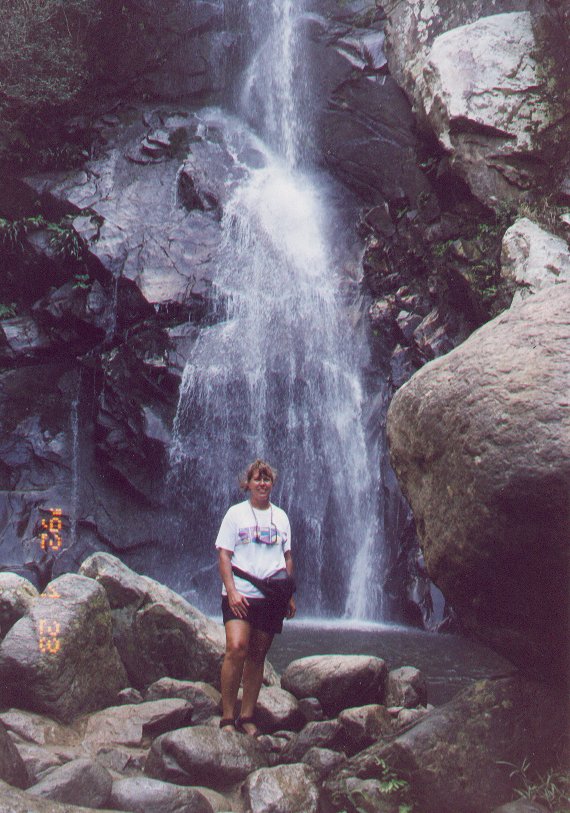
Sandy in front of a Jalapa waterfall


